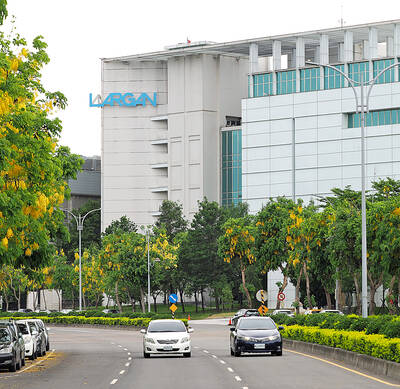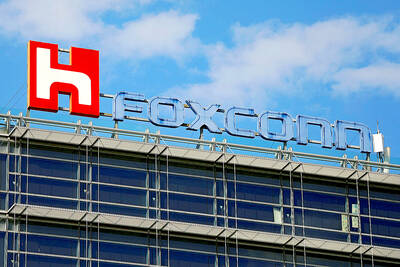Properties priced at NT$30 million (US$1.01 million) or less that have convenient access to facilities and public transport systems are a main draw for most Hong Kongers who have emigrated to Taiwan and are seeking a home, local real-estate companies say.
The number of people from Hong Kong and Macau with a household registration in Taiwan has risen from 6,193 in 2015 to 9,549 in 2018 and about 11,000 last year, Ministry of the Interior data showed.
The pro-democracy protests that raged in Hong Kong last year spurred more people to emigrate to Taiwan, giving a boost to the local property market, real-estate brokers said.
Taiwan’s good living environment and cheap cost of living, plus relatively low housing costs compared with Hong Kong, have attracted many Hong Kongers over the past few years, Continental Development Corp (大陸建設) chairman Christopher Chang (張良吉) said.
For instance, a Hong Konger spending NT$100,000 a month renting a spacious apartment in Taiwan would at most only be able to rent a home with two bedrooms at the same price in Hong Kong, Chang said.
If they want to send their children to an international school, the tuition fees in Taiwan are about 33 percent of those in Hong Kong, he said.
H&B Business Group (住商不動產) head researcher Jessica Hsu (徐佳馨) said that, based on her observations, most Hong Kongers prefer properties priced at NT$30 million or less with two to three bedrooms.
Most Hong Kongers have their household registration in New Taipei City, 2,774 last year, followed by 2,418 in Taipei, 1,392 in Taichung, 1,126 in Taoyuan, 1,112 in Kaohsiung and 496 in Tainan, Hsu said.
Hong Kongers place a high value on having certain facilities deemed vital to their daily lives in their neighborhoods, such as traditional markets and supermarkets, and access to the high-speed rail, railway and the MRT metropolitan railway system, she said.
Most potential buyers from Hong Kong are young couples who have double, stable incomes and no children, she added.
Hsu dismissed concern that an inflow of capital from Hong Kong could spur speculation in the property sector, saying that given that there are about 11,000 Hong Kongers, if 5,000 purchased property it would account for less than 2 percent of the average 300,000 annual transactions in Taiwan.
In addition, the nation’s relatively high transaction tax on properties sold within two years of purchase would also dampen any speculation, she said.
Evertrust Rehouse Co (永慶房屋) general manager Yeh Ling-chi (葉凌棋) said that as most Hong Kongers purchase property for personal use and prefer homes priced at about NT$15 million, he does not expect them to speculate in the property market.

Taiwan’s foreign exchange reserves hit a record high at the end of last month, surpassing the US$600 billion mark for the first time, the central bank said yesterday. Last month, the country’s foreign exchange reserves rose US$5.51 billion from a month earlier to reach US$602.94 billion due to an increase in returns from the central bank’s portfolio management, the movement of other foreign currencies in the portfolio against the US dollar and the bank’s efforts to smooth the volatility of the New Taiwan dollar. Department of Foreign Exchange Director-General Eugene Tsai (蔡炯民)said a rate cut cycle launched by the US Federal Reserve

Handset camera lens maker Largan Precision Co (大立光) on Sunday reported a 6.71 percent year-on-year decline in revenue for the third quarter, despite revenue last month hitting the highest level in 11 months. Third-quarter revenue was NT$17.68 billion (US$581.2 million), compared with NT$18.95 billion a year earlier, the company said in a statement. The figure was in line with Yuanta Securities Investment Consulting Co’s (元大投顧) forecast of NT$17.9 billion, but missed the market consensus estimate of NT$18.97 billion. The third-quarter revenue was a 51.44 percent increase from NT$11.67 billion in the second quarter, as the quarter is usually the peak

Nvidia Corp’s major server production partner Hon Hai Precision Industry Co (鴻海精密) reported 10.99 percent year-on-year growth in quarterly sales, signaling healthy demand for artificial intelligence (AI) infrastructure. Revenue totaled NT$2.06 trillion (US$67.72 billion) in the last quarter, in line with analysts’ projections, a company statement said. On a quarterly basis, revenue was up 14.47 percent. Hon Hai’s businesses cover four primary product segments: cloud and networking, smart consumer electronics, computing, and components and other products. Last quarter, “cloud and networking products delivered strong growth, components and other products demonstrated significant growth, while smart consumer electronics and computing products slightly declined,” compared with the

The US government on Wednesday sanctioned more than two dozen companies in China, Turkey and the United Arab Emirates, including offshoots of a US chip firm, accusing the businesses of providing illicit support to Iran’s military or proxies. The US Department of Commerce included two subsidiaries of US-based chip distributor Arrow Electronics Inc (艾睿電子) on its so-called entity list published on the federal register for facilitating purchases by Iran’s proxies of US tech. Arrow spokesman John Hourigan said that the subsidiaries have been operating in full compliance with US export control regulations and his company is discussing with the US Bureau of